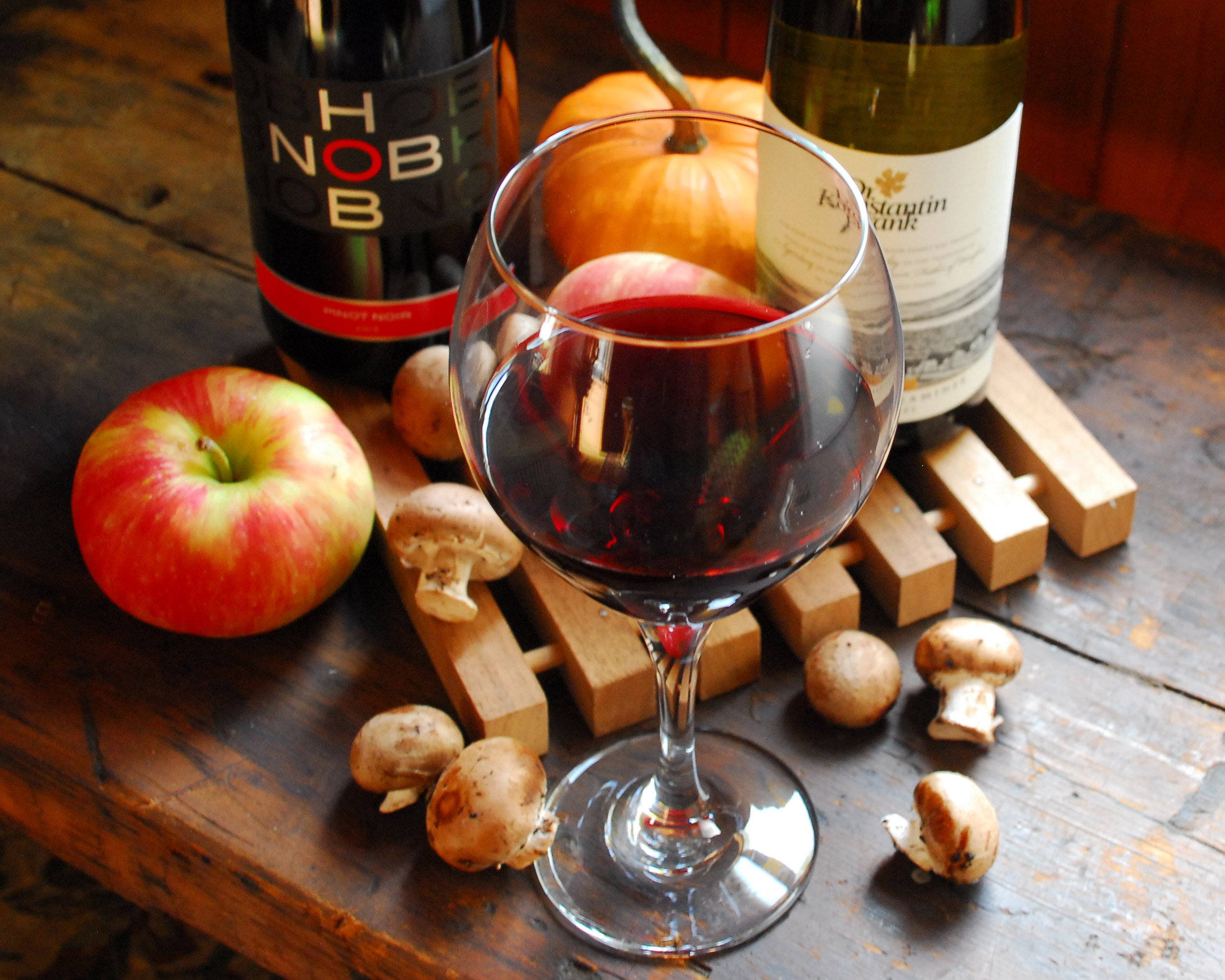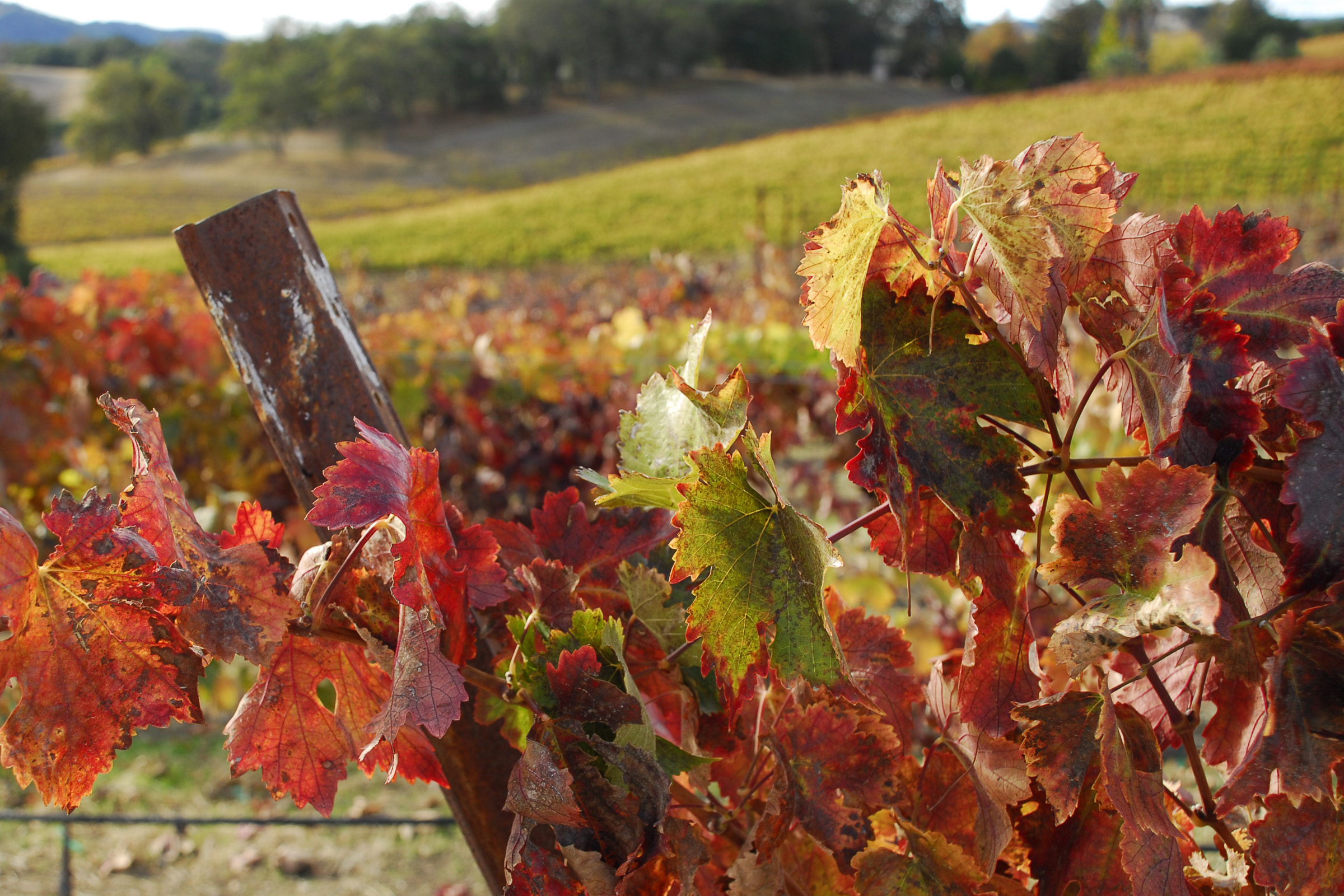Pairing Wine with Fall Flavors
/This article was published in The WEDGE Newspaper, October/November 2017.
Fall conjures up shorter days, cooler temps, and comfort food. Flavors transition from light and fresh salads, chicken, and berries to savory spices, baked pies, and buttery squashes. Remarkably, some of the summer’s favorite wines transition well into this season. Here are some popular tastes of fall and the wines that will give them more dimension.
Apples are synonymous with autumn and range from crisp and tart to sweet and juicy. Enter Chardonnay, a wine that has been vilified because of its popularity two decades ago. It’s incredibly versatile, though, and has its own range of flavors from tropical and citrus to buttery. Chardonnay is a French grape that produces white Burgundy and Champagne—two very different wines. People who don’t like the traditional oak and butter style of Burgundy have choices in varying degrees.
Naked, or unoaked, Chardonnay can be as crisp as fresh apples and often have a hint of apple flavor. Try unoaked from California, Oregon, or Washington for more of the apple coming through. Those from Australia and Chile may have more of the pineapple, citrus, and peach flavors.
Serving baked apples with cinnamon? Butternut squash with apples and maple syrup? Or apple dumplings with vanilla ice cream? A buttery Chardonnay with oak would be an excellent match, for instance Bread and Butter, Kendall Jackson, and Franciscan from California. Lightly-oaked Chards are also available from Chateau Ste. Michelle, Sonoma-Cutrer, and Rutherford Ranch.
Chardonnay sparkling wines, i.e. Champagne and Blanc de Blancs, will be drier and pair well with many apple dishes, as well as cheeses.
When it comes to squash, there is a range of wine choices, depending on the squash and how it’s served. A buttery Chardonnay would work with butternut squash, but, because of its ginger, floral, and herbal qualities, Gewurztraminer may be what you’re seeking.
This white wine originated in Germany, but more is grown in France and the United States, including in New York state, than in Germany now. The nose generally has a distinctive rose-but-sweeter aroma, or lychee fruit. They may have a sweeter taste, but are low in acid and sugar, with flavors or aromas of red grapefruit, honey, pineapple, apricot, and spices. A dry or off-dry Gewurztraminer can enhance zucchini with herbs or balance spaghetti squash with chunky marinara sauce.
Earthy mushrooms in soups and stews and Thanksgiving dressings are complemented by the slight earthiness and cherry or tobacco notes of a Pinot Noir. Generally medium-bodied, Pinot Noir is drinkable all year, but is a nice transition from light, summery wines to the heavier Cabernet Sauvignons and Zinfandels of winter. The wine also pairs well with foods like roast pork, wild rice with mushrooms, and dishes with truffles.
France is the leading producer of Pinot Noir, most notably in the Burgundy region, the home of some of the most expensive wines in the world. The French style has more of the earthy aromas, floral qualities, and cherries considered the classic red Burgundy. In the United States, California and Oregon are the major Pinot Noir producers, though New York wineries are also working with this tricky varietal. Oregon Pinots are closer to the French style in part because of the cooler climate, typically with flavors of cherries, truffles, and tobacco, spice or leather. California Pinots are more fruit forward with flavors of cherries, raspberries, spice, and caramel.
One of fall’s most popular flavors of late is pumpkin spice. This flavor is made up of several other flavors combined: usually pumpkin, cinnamon, ginger, and allspice. As it happens, all of the wines noted above would pair with pumpkin spice, depending on the dish. If the food is prevalent with pumpkin, a buttery Chardonnay would be a good option. If ginger is strong, an oaked Chardonnay or a Gewurztraminer may work well. Gewurztraminer, Champagne, or Pinot Noir will pair nicely with dishes where cinnamon or allspice come through.
If planning a special dinner, do a trial run with a couple bottles of wine to see which works better with the dish. If unsure, the wine shop should have some suggestions based on the types of wine that you normally drink.
Article and all photos by Glynis Valenti














